Lee Evans and the 1968 Olympics: A Legacy of Speed and Solidarity
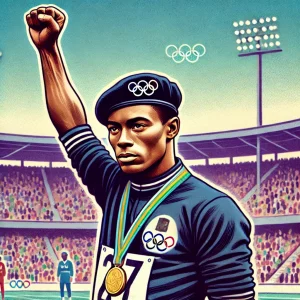 In 1968, Lee Evans stood atop an Olympic podium, having just set a world record, and raised a black beret in solidarity with a powerful movement. This moment etched his name into both sports history and the civil rights movement.
In 1968, Lee Evans stood atop an Olympic podium, having just set a world record, and raised a black beret in solidarity with a powerful movement. This moment etched his name into both sports history and the civil rights movement.
Lee Evans 1968 Olympics is remembered not only for the astonishing speed but also for his courage to stand against racial injustice. In this blog post, we will explore Evans’ dual legacy as a world-class athlete and a staunch activist. What drove him to protest on such a global stage, and what impact did it have?
Lee Evans was a standout sprinter from a young age. At the 1968 Olympics, he won the 400 meters and the 4×400 meters relay, setting world records in both events. His 400-meter record time of 43.86 seconds stood unbroken for two decades. Evans was undefeated in his first year out of high school, won multiple national titles, and continued to compete and coach globally. His athletic prowess made him a key figure in American track and field..
Activism and the 1968 Protest
During the medal ceremony, Evans wore a black beret and raised his fist in a Black Power salute, a gesture of solidarity with Tommie Smith and John Carlos, who had been sent home for their similar protest earlier in the games. This act was a stand against racial discrimination and support for civil rights.
Despite warnings from officials, Evans’ protest was a bold statement. It highlighted the racial tensions of the era and underscored the role of athletes in social justice movements. His actions, along with those of Smith and Carlos, brought significant attention to the Civil Rights Movement on an international stage.
Tommie Smith and John Carlos
Tommie Smith and John Carlos are perhaps best remembered for their bold and iconic protest during the 200 meters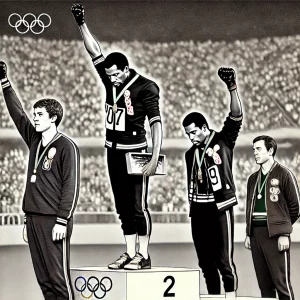 medal ceremony. On October 16, 1968, after winning gold and bronze respectively, they took the podium and raised their black-gloved fists in a Black Power salute while the national anthem played. This gesture was a powerful symbol of defiance against racial discrimination and a call for human rights. They also wore black socks without shoes to represent black poverty, and Carlos wore beads to protest lynching.
medal ceremony. On October 16, 1968, after winning gold and bronze respectively, they took the podium and raised their black-gloved fists in a Black Power salute while the national anthem played. This gesture was a powerful symbol of defiance against racial discrimination and a call for human rights. They also wore black socks without shoes to represent black poverty, and Carlos wore beads to protest lynching.
The response to Smith and Carlos’ protest was swift and severe. The International Olympic Committee (IOC) deemed their actions as political statements that were inappropriate for the Olympic Games. Under immense pressure from the IOC, the United States Olympic Committee expelled them from the Olympic Village and sent them home. This immediate and harsh punishment highlighted the controversial nature of their protest and drew worldwide attention
Why Smith and Carlos are More Widely Known:
The iconic image of Smith and Carlos with their raised fists became a symbol of resistance and the fight for civil rights. Their immediate expulsion and the dramatic nature of their protest created a lasting impression, making their actions more widely recognised and remembered than those of Evans, despite his equally significant protest .
Did You Know?
Lee Evans was the first man to break the 44-second barrier in the 400 meters. His record-setting performance and his activism were pivotal moments in the intersection of sports and social justice (Wikipedia) (NBC Olympics).
Continued Activism and Coaching
After retiring from competition, Evans dedicated himself to humanitarian work and coaching. He influenced athletics programs in several African countries, including Nigeria, where he played a significant role in developing their track and field infrastructure. Evans was committed to using sports as a vehicle for social change and empowerment. His work in Africa extended beyond coaching, as he was involved in various community projects aimed at improving education and health care.
Legacy
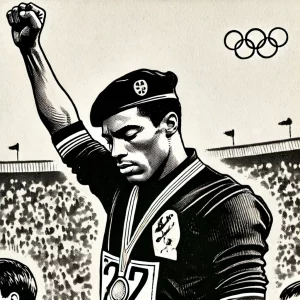 Lee Evans 1968 Olympics‘ legacy as an athlete and activist is profound. He was inducted into the National Track and Field Hall of Fame and the U.S. Olympic Hall of Fame, recognizing his contributions to both sports and social justice. Despite facing challenges and controversies, such as a doping scandal involving an athlete he coached, Evans remained a respected figure in the world of athletics and beyond. His commitment to civil rights and social justice left a lasting impact on those he worked with and inspired future generations of athletes to use their platforms for positive change.
Lee Evans 1968 Olympics‘ legacy as an athlete and activist is profound. He was inducted into the National Track and Field Hall of Fame and the U.S. Olympic Hall of Fame, recognizing his contributions to both sports and social justice. Despite facing challenges and controversies, such as a doping scandal involving an athlete he coached, Evans remained a respected figure in the world of athletics and beyond. His commitment to civil rights and social justice left a lasting impact on those he worked with and inspired future generations of athletes to use their platforms for positive change.
Final Years and Reflection
In his later years, Evans faced health challenges, including a stroke in 2021. Despite these personal struggles, his legacy endured. The fundraiser initiated by his family to bring him back to the United States for medical care demonstrated the deep respect and admiration he garnered throughout his life. As we reflect on his contributions, it’s clear that Evans’ influence extended far beyond the track, leaving a legacy of resilience, activism, and dedication to equality.
Lee Evans’ story is one of exceptional athletic talent and profound bravery. His actions at the 1968 Olympics remind us of the power of sport as a platform for change. As Harry Edwards, the architect of the Olympic Project for Human Rights, stated, Evans was “one of the greatest athletes and social justice advocates” of his time (Richmond Free Press).
Find Out More!
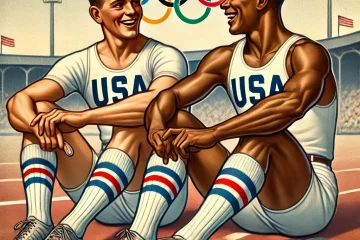
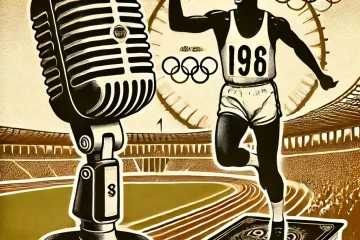
0 Comments